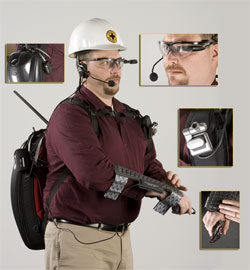State of Emergency

The terrible deaths of eight students in a high school in Alabama from a tornado makes the rhetorical issues surrounding risk communication an urgent issue for the general public, especially because according to the Associated Press warning systems actually were deployed according to procedures: sirens were going off, and students were being held on the premises. Ironically, as the news was coming out of Alabama, I was attending "One Step ahead of the Crisis," a panel discussion about the uses of technology in disaster response and preparation that mentioned mass notifications to parents of school children as an exemplary case.
This oddly named "Igniting Technology" evening included presentations by computer scientists and officials representing municipalities and school districts who discussed scenarios that included assembling city workers in the event of a gas leak near Disneyland (Anaheim) and reuniting missing people in shelters after an earthquake (Ontario). Given that clear communication plays such a central role in these situations, I was a little bit taken aback by the visually chaotic information on the PowerPoint slides and the sloppy use of "utilize" by presenters.
However, other aspects of the presentations were compelling, particularly those affiliated with the NSF-funded ResCUE project. For example, I found demonstrations of the Evac-Pack interesting, although I recognized the rhetoric of the human-as-sensor as being borrowed from commonly disseminated PR about the new technologically-savvy Army as well. Like Wi-Fi Bedouin it is also a project that merges tropes of wearability with those of human contact.
UCI professor Nalini Venkatasubramanian emphasized the importance of capitalizing on peer-to-peer systems and social networks as robust solutions to communication breakdowns. As the government seeks to regulate these systems and justifies constraints by citing threats from terrorists, child molesters, and pirates, it is important to keep in mind that maintaining a non-centralized network that tolerates multiple pathways and patterns of use may be key to saving lives in a crisis.
Labels: panels, risk communication, ubiquitous computing, UC Irvine

0 Comments:
Post a Comment
<< Home